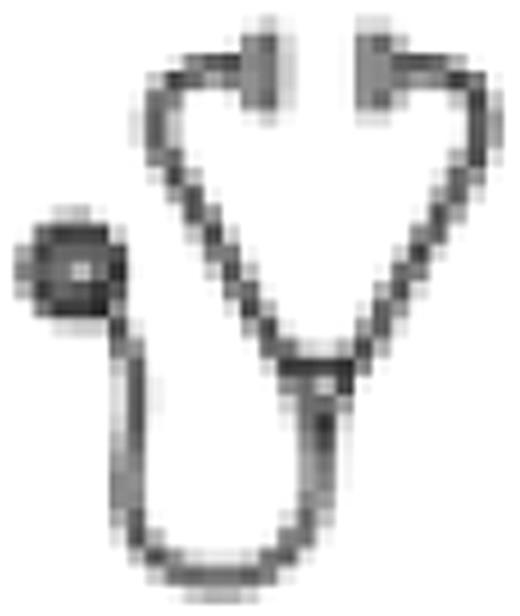Abstract
Abstract 111
The addition of rituximab to CHOP-21 significantly improved clinical outcome in elderly patients with DLBCL (Coiffier et al., 2002). The MInT trial, randomized young good-prognosis patients to receive a CHOP-like regimen or the same CHOP-like regimen plus rituximab, and was stopped early because of superiority of the rituximab arm, and results were published with a median follow-up of 34 months (Pfreundschuh et al., Lancet Oncology 2006; 379-91).
Because the MInT study was the first study to show a survival benefit with the addition of rituximab to a CHOP-like regimen in young good-prognosis patients, extended follow-up is important to determine whether the survival benefit is maintained over time and whether a definitive effect on cure rates can be shown.
In a phase III intergroup study with participating cooperative groups from 18 countries, previously untreated patients (18-60 years) with low-risk DLBCL (age-adjusted IPI 0 or 1, stages II-IV and stage I with bulky disease) were randomized to receive 6 cycles of a CHOP-like regimen (CHEMO) or the same chemotherapy plus rituximab 375 mg/m2, given on day 1 of each 3-week regimen and on days 1, 22, 43, 64, 85 and 106 of the 2-week regimens, respectively (R-CHEMO). Radiotherapy (30-40 Gy) was planned to sites of initial bulky disease and/or extranodal involvement. The primary endpoint was event-free survival (EFS) with events defined as failure to achieve complete remission, progressive disease, relapse, death or additional therapy. The trial was powered to show a 10% difference in EFS rate after 3 years.
Between 05/2000 and 10/2003 a total of 823 patients were recruited of whom 396 were allocated to receive CHOP-21, 361 to CHOEP-21, 34 to MACOP-B, and 32 to PMitCEBO with or without rituximab. Toxicity, incidence of adverse events and severe adverse events in the CHEMO and the R-CHEMO arms were not significantly different. After a median follow-up of 70 (0.03-117) months, patients assigned to chemotherapy and rituximab had increased 6-year event-free survival compared with those assigned to chemotherapy alone (74.0% [95% CI 69.0–78.3] vs 55.7% [50.3-60.8]; log-rank p<0·0001), increased 6-year progression-free survival (79.9% [75.1 - 83.8%] vs 63.8% [58.2-68.8]; log-rank p<0.001) and increased overall survival (89.8% [86.0-92.6] vs 80.0% [75.3-83.9; log rank p=0.001). In a multivariate analysis event-free survival was affected by the addition of rituximab (hazard ratio [HR] 0.49, p< 0.001), age-adjusted IPI (HR 1.73, p<0.001), and bulky disease (HR 1.43, p=0.004). Similar effects were observed for OS, while PFS was affected by treatment arm (HR 0.49, p<0.001) and age-adjusted IPI (HR 1.8, p<0.001). As a consequence, a very favorable subgroup (aaIPI=0, no bulky) can be distinguished from a less favorable subgroup (aaIPI=1 and/or bulky disease) among good-prognosis patients treated with rituximab. There were 10 late (>60 months) events after CHEMO (61.4 to 96.1 months), including 4 in the very favorable subgroup, while all 8 late events (67.5 to 105.7 months) after R-CHEMO occurred in the less favorable subgroup only, and none in the very favorable subgroup.
Addition of rituximab to a CHOP-like regimen leads to a significant improvement of the outcome in young patients with good-prognosis diffuse large B-cell lymphoma, with significant survival benefit maintained during a 6-year follow-up. However, except in the very favorable subgroup after R-CHEMO, late relapses after 5 years occur. While reduction of treatment in a randomized study like the FLYER trial of the DSHNHL is justified, further progress, e.g. by dose densification (UNFOLDER trial of the DSHNHL) and/ or dose escalation is still warranted for the less favorable subgroup. Supported by Roche, Deutsche Krebshilfe and KML.
Pfreundschuh:Roche: Consultancy, Membership on an entity's Board of Directors or advisory committees; GSK: Membership on an entity's Board of Directors or advisory committees; Pfizer: Membership on an entity's Board of Directors or advisory committees; Amgen: Membership on an entity's Board of Directors or advisory committees. Trneny:Roche: Honoraria, Research Funding. Walewski:Roche: Honoraria, Research Funding. Pettengell:Roche: Honoraria. Jäger:Roche: Honoraria, Research Funding. Lopez-Guillermo:Roche: Consultancy.

This icon denotes an abstract that is clinically relevant.
Author notes
Asterisk with author names denotes non-ASH members.

